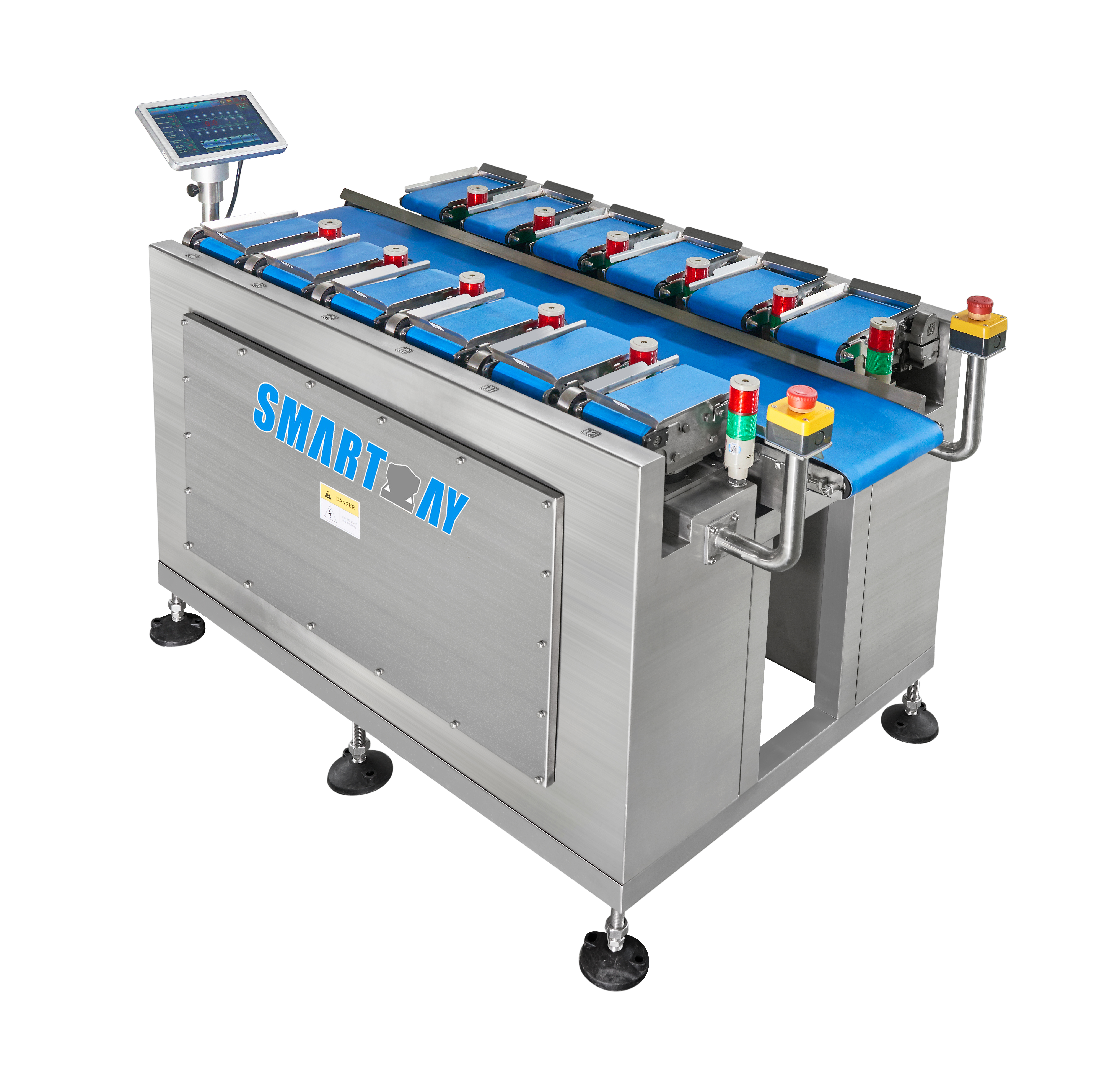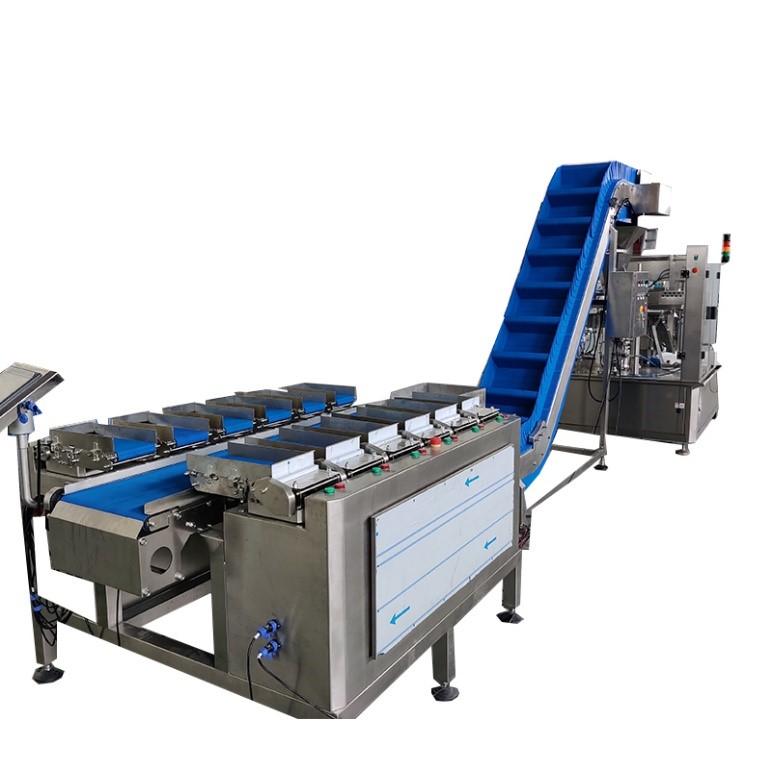How to Choose the Right Weighing Equipment for Meat Processing Plants?

The meat processing industry operates in a highly competitive and tightly regulated environment. For companies involved in producing meat products, precision in weighing is a cornerstone of quality control, cost-efficiency, and compliance. Accurate weighing ensures portion control, reduces waste, and helps meet regulatory standards. However, achieving these goals consistently, especially in large-scale operations, is no simple task.
Meat processing plants often face numerous challenges when it comes to weighing, from variations in product size and shape to the speed and efficiency of operations. Traditional manual methods or basic scales might not meet the growing demands of modern meat processing operations. In this blog, we will explore the importance of accurate weighing in meat processing, the challenges involved, and how advanced technologies, particularly the belt combination weigher, can address these issues. We will also examine key factors to consider when choosing weighing equipment to help meat processors streamline their operations, improve product quality, and achieve greater cost savings.
The Role of Precision Weighing in Meat Processing
Why Precision Weighing Matters
In meat processing, precision weighing plays a pivotal role in multiple areas, including product consistency, portion control, and regulatory compliance. Each of these factors has a direct impact on a meat processing plant's reputation, profitability, and operational efficiency.

Product Consistency: Consumers expect the same quality and weight in each product, whether it's a pre-packaged steak, minced meat, or sausages. Accurate weighing ensures that every portion is consistent in weight, which is crucial for customer satisfaction. Inconsistent weights could result in complaints, return rates, and loss of consumer trust.
Portion Control: Meat processors must ensure that each portion of meat is precisely measured to meet customer orders or retail packaging specifications. Overpackaging leads to waste, which drives up operational costs, while underpackaging can lead to under-delivery of products, which may affect customer relationships and regulatory compliance.
Regulatory Compliance: Regulatory bodies impose strict rules and guidelines on product weight. A failure to comply with legal standards can result in fines, recalls, or loss of certifications, all of which can significantly harm a meat processing plant’s business.
Despite the obvious importance of accurate weighing, many meat processors still struggle with the challenges of achieving consistent measurements. Traditional manual methods or basic scales often fail to meet the high-volume demands of modern meat processing operations, resulting in operational inefficiencies, human error, and product inconsistency.
Common Challenges in Meat Processing Weighing
Some of the most common challenges faced by meat processing plants when using traditional weighing methods include:
Inaccuracies: Traditional methods can be prone to human error or lack the precision needed for consistent results. Small errors in weight measurement can lead to large discrepancies in overall production.
Overpackaging: Without accurate weighing, meat portions can easily exceed the required weight, resulting in unnecessary waste, higher packaging costs, and regulatory violations.
Labor-Intensive Processes: Manual weighing methods require significant human intervention, which slows down production and increases labor costs.
Slow Weighing Speed: Traditional scales often can't keep up with high-speed production lines, leading to bottlenecks, delays, and lower overall efficiency.
These challenges can be alleviated with the introduction of more advanced weighing technology, such as the belt combination weigher.
Key Features of the Belt Combination Weigher for Meat Processing
Multi-head Weighing Technology: Accurate Portioning for Varying Meat Cuts
One of the standout features of the belt combination weigher is its multi-head weighing system. Unlike traditional scales that can only weigh one portion at a time, the multi-head system can weigh multiple portions simultaneously, ensuring accurate portion control even when dealing with meat cuts of varying sizes. This capability is especially important in meat processing, where different cuts of meat, such as steaks, chops, or roasts, can vary significantly in shape and weight.
The multi-head technology utilizes multiple load cells and advanced algorithms to calculate the most accurate weight combination from a range of measured portions, optimizing the result for consistency. Whether it's for finely diced meat or larger cuts, the multi-head system ensures that every portion meets the required weight specifications.
High-Speed Weighing: Keeping Up with High-Volume Production
Meat processing plants often operate under tight timelines, with the need to produce large volumes of product in a short amount of time. A high-speed weighing system is essential to maintaining efficiency and throughput. The belt combination weigher can weigh each product quickly without sacrificing accuracy, helping plants meet production targets while keeping up with the pace of the production line.
The high-speed nature of these systems significantly reduces downtime during weighing and eliminates bottlenecks in the production process. With quick and efficient weighing, meat processors can achieve a continuous, uninterrupted flow of production, which is crucial in meeting demand and improving overall productivity.
Durability and Hygiene: Built to Withstand the Demands of the Meat Industry
The meat processing environment presents its own unique set of challenges. Durability and hygiene are paramount in a high-demand, high-hygiene industry like meat processing. The belt combination weigher is designed to withstand the harsh conditions of meat processing plants, including exposure to extreme temperatures, moisture, and frequent cleaning.
Made from stainless steel and other robust materials, these machines are not only durable but also easy to clean, helping meet stringent food safety and hygiene standards. Regular cleaning is essential to prevent contamination, and the belt combination weigher's easy-to-maintain design ensures that operators can quickly and efficiently sanitize the system, minimizing the risk of cross-contamination in the production process.
Customizable Settings: Tailoring to Different Meat Types and Packaging Sizes
Every meat processing facility has its own set of unique needs. Whether you’re dealing with small packs of ground meat or large cuts of steak, a one-size-fits-all solution often doesn’t work. The belt combination weigher offers customizable settings to adapt to different types of meat and packaging sizes.
With the ability to adjust parameters such as speed, weight range, and portion sizes, the system can be tailored to suit various meat products, whether it's poultry, beef, pork, or other specialty items. Customizability ensures that processors can efficiently manage different product lines without needing to invest in separate machines for each task.
Benefits of Using a Belt Combination Weigher in Meat Processing
Enhanced Efficiency: Reduction in Downtime and Faster Throughput
As discussed earlier, one of the key benefits of using a belt combination weigher is its ability to reduce downtime. Traditional weighing methods, especially manual weighing, can slow down production, causing delays and inefficiencies. By automating the weighing process, the belt combination weigher speeds up production, leading to faster throughput.
This is particularly beneficial in high-volume operations, where a constant flow of products is required to meet customer demand. The reduced downtime also allows for better resource management, as fewer labor hours are required for weighing and measuring.
Cost Savings: Minimizing Waste and Accurate Packaging
Another significant benefit of using advanced weighing technology is the potential for cost savings. With traditional methods, inaccurate weighing often leads to overpackaging, which results in wasted materials and increased costs for packaging. The belt combination weigher, with its high accuracy, minimizes the risk of overpackaging by ensuring that each portion is within the specified weight range.
Additionally, the high-speed and automated nature of the weigher reduces labor costs and the potential for human error, further contributing to cost savings.
Improved Product Consistency: Enhancing Customer Satisfaction and Compliance
Accuracy in weighing directly translates to product consistency, which is crucial for customer satisfaction and regulatory compliance. With accurate portioning, meat processors can ensure that each product has the same weight, appearance, and quality every time, which is essential for brand reputation and consumer trust.
Furthermore, compliance with weight regulations is simplified, reducing the risk of fines or recalls due to non-compliance.
Factors to Consider When Choosing a Belt Combination Weigher for Meat Processing
Capacity: Handling the Volume of Your Operation
The first consideration when selecting a belt combination weigher is capacity. Ensure that the system can handle the volume and scale of your operations. Depending on your production needs, you may require a weigher that can process large quantities of meat quickly and efficiently.
Weight Range and Accuracy: Meeting Product Specifications
Next, choose a model with an appropriate weight range and the necessary accuracy required for your specific products. Weighers vary in terms of the weight they can measure, so it's important to select one that can accommodate the size and type of meat you process while delivering the precise measurements needed.
Maintenance and Support: Long-Term Operation
Investing in a belt combination weigher is a long-term commitment, and regular maintenance is essential for keeping the system running smoothly. Look for a model that is easy to maintain, with clear instructions for cleaning and servicing. Additionally, ensure that you have access to reliable technical support in case of any issues.
Integration with Existing Systems: Smooth Operation
Consider how well the weigher integrates with your existing equipment, such as packaging machines and conveyors. A seamless integration will help ensure that your entire production line runs efficiently and that data flows smoothly between systems for better control and monitoring.




